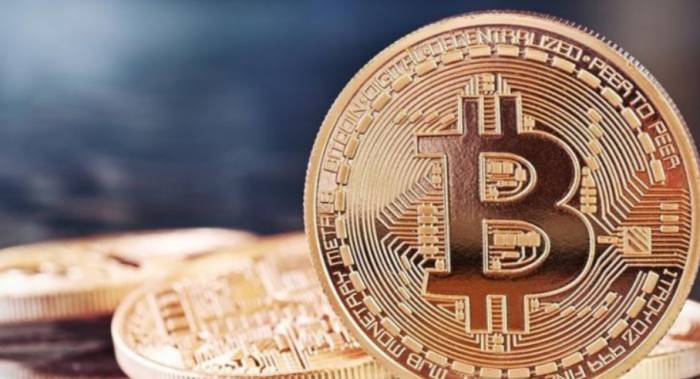Economic Landscape Shifts
The United States, through more than a decade of meticulous planning, hoped that this sudden and significant tightening of monetary policy would achieve a perfect global financial harvest.
But unexpectedly, the United States miscalculated!
This move that was once played very smoothly is now ineffective. Not only have some small and medium-sized countries not collapsed, but the resource-rich countries that the United States most wants to harvest have become stronger instead.
And other developed Western countries that are on the verge of a crisis, such as the United Kingdom, the Eurozone, or Japan, have also been able to come back to life.
It seems that the world is changing too fast, and only the United States is still asleep and hasn't woken up.
01, Ten-year layout
All along, the United States' usual routine is like this: by a large amount of money printing, using over-issued currency to push up the asset prices of various countries, forming asset bubbles, and then by suddenly tightening the money supply, attracting funds to flow back to the United States. After causing other countries to lack financial support, the bubble bursts, and asset prices fall sharply.
Advertisement
The United States has spent more than a decade to complete this layout.
Looking back, this layout actually began after the subprime mortgage crisis.
First, after 2009, the United States implemented three rounds of large-scale quantitative easing.In 2015, the United States once thought that its strategic layout was complete and began to raise interest rates. However, that round of rate hikes did not yield any significant effects, and instead, the U.S. economy encountered problems. As a result, under the obstruction of then-President Trump, the last interest rate hike cycle did not truly conclude and was hastily halted.
This was essentially a warning to the United States that this approach was no longer viable, but the country failed to recognize it. Instead, American financial capitalists believed that the previous monetary easing was insufficient. Therefore, after the COVID-19 pandemic emerged in 2020, the United States could not wait to issue currency on an even larger scale, hoping to further inflate global asset prices and create a larger asset bubble.
Finally, in the second half of last year, the United States began to tighten its monetary policy, and the U.S. dollar appreciated significantly, causing capital to flow back.
From the U.S. perspective, this time the strategic layout has truly been completed and should be successful.
02, Small countries? Not successful
The financial capitalists on Wall Street in the United States have been eagerly anticipating the arrival of financial harvesting, but a year has passed, and we find that only Sri Lanka, due to a severe debt crisis, has gone bankrupt and had to request international assistance.
Apart from this, almost no country has truly been harvested. Argentina is facing extremely high inflation and is combating the crisis with interest rates exceeding 70%. Turkey, on the other hand, is going against conventional economic wisdom, keeping interest rates lower as inflation rises, using this method to preserve domestic asset prices.
Even these small countries have not provided the United States with an opportunity for harvesting.03, Resource-rich countries? Stronger
The United States undoubtedly most desires to reap benefits from resource-rich countries, taking Russia as an example. The U.S. once hoped to render the ruble worthless. However, Russia has used its energy resources to put a stranglehold on European countries, causing the ruble to rebound significantly after a short-term decline. The exchange rate of the ruble against the U.S. dollar is even higher than before the conflict. Current economic data provided by Russia also shows that although there has been some impact after the conflict, it is not as bad as the U.S. imagined. The U.S.'s intention to take this opportunity to reap benefits is entirely impossible.

In addition, similar countries include Iran, Libya, Venezuela, and other resource-rich nations. The more resource-rich a country is, the more its exchange rate tends to rise after the U.S. tightens its monetary policy.
04, Other developed countries? Not possible
Of course, the U.S. has also targeted some large economic entities because, for the U.S.'s massive debt, reaping benefits from small countries would only be a drop in the ocean. If the U.S. could successfully reap benefits from the UK, the Eurozone, Japan, or China in this round, then the U.S. would truly be successful. But looking back now, other developed economies in the West, although they have faced certain fluctuations and risks at different times, have all safely weathered them.For instance, at the end of September, the British pound had plummeted to a historical low. At that time, the UK was hit hard in the stock market, foreign exchange market, and bond market simultaneously. However, looking back now, it was just a fleeting opportunity for investors, and the UK's stocks, bonds, and currency have all recovered to some extent.
The euro exchange rate had also fallen to 0.95, but it has now risen to 1.06.
The Japanese yen had once broken below 150, but it has currently returned to the 130 level.
China, despite experiencing a devaluation of the yuan, not only failed to see the capital outflow that the US had hoped for but instead attracted a continuous stream of funds to purchase Chinese assets.
In fact, the US is engaged in a massive gamble. If it cannot successfully reap the benefits, it will immediately face a backlash.
Due to continuous interest rate hikes, the US will fall into a recession in 2023, failing to successfully harvest the resources and assets of other countries, and the US is about to pay a heavy price.
Leave a comment